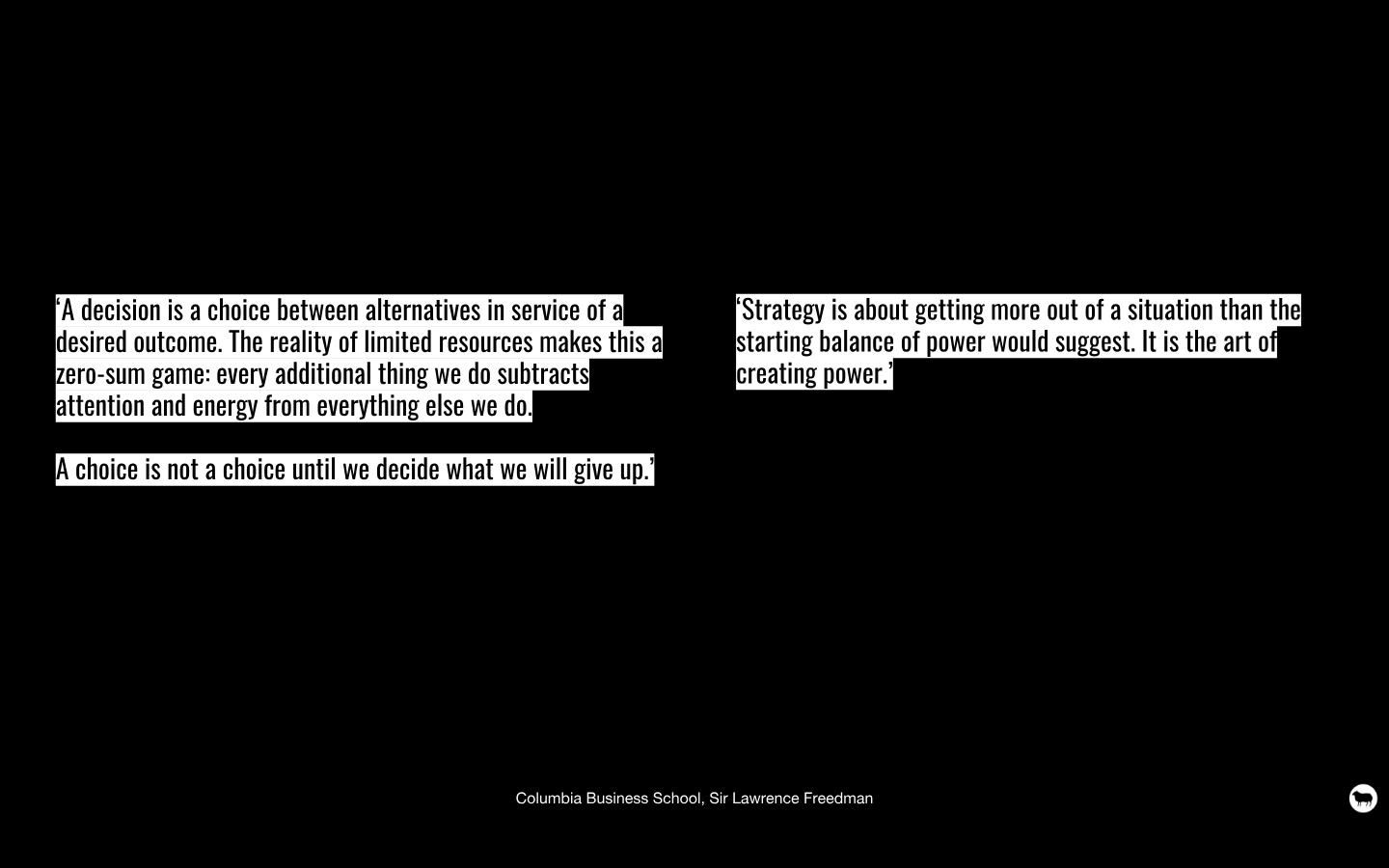
MAKING GREAT ADVERTISING IS REALLY SIMPLE. IT’S ALSO REALLY HARD.
Lucian Trestler
22/05/2018
Before I worked in advertising I thought it’d be the easiest job in the world. I thought that because 99% of ads are shit, all you need to do to be successful is be like the not-shit 1%. That is to say be emotional, be punchy, be provocative, be…. anything, just be different to the boring boring (did I mention boring) sea of shit out there.
Now I work at BBH. I still think advertising is that simple.
‘When the world zigs, zag’ is BBH’s brand idea taken from one of our first ever ads. It’s at the heart of what we do. ‘Difference’ isn’t just a two bob philosophy or a frivolous creative penchant. It is the most powerful communications tool there is to deliver commercial results. We have a vast amount of data to support that. Evidence from neuroscience, marketing science and creative effectiveness data all agree on this point; difference is commercially safer than ‘safety.’
And it has been used to create world famous, commercially powerful, enduring brand ideas for our clients.
With that in mind, when I was recently asked to write a presentation on ‘How to get to great work’ my immediate thought was, that’s the wrong question. The real question is; what is stopping us getting to great work?
I decided to look at this like a UX problem having recently learned a little bit about the basics of experience mapping from Amy Andrews;
‘At BBH, we often conduct experience mapping to understand where a system or process can be improved for those who use it. The map acts as a guide to accurately pinpoint user/system frictions … and illuminate actionable insights to reduce these. A similar approach can be applied to the workplace.’
This is my analysis of the process of making advertising, where difference and ultimately the quality of the work suffers:
>1 Most people would rather zig.
Most people (knowingly or unknowingly) would rather follow category conventions. They’d rather stick to the familiar because it feels safe and right. Difference needs to be a shared ambition from the outset with an understanding that this means leaving the comfort zone.
>2 A strategic decision means not doing what everyone wants.
Strategy is the art of sacrifice, it means putting your expenditure against the point at which it can make the biggest impact. That means not doing some things that people in that organisation want to do. That means some people won’t be happy. But it also means getting to a focused brief which is needed to get to great creative.
>3.1 A creative idea needs creative direction not group consensus.
Komar and Melamid commissioned an enormous quant study asking the USA what they wanted in a picture, then they painted the result which it turned out, nobody wanted to buy. You can’t do creative by committee.
Once we’ve got strategic focus we must trust the creative directors to deliver against the brief. Making work requires keeping a distant perspective from an idea whilst being very close to it – something most people are un-practiced in. It means limiting the process to those with sign off.
>3.2 A creative idea needs creative direction not group consensus.
Of course organisations want to ‘de-risk’ creativity, to make it a science. This is exploited by companies who create formulas or for-profit research companies who apply a didactic, one dimensional point of view on how creativity works. Unfortunately, this kind of testing is at best a nonsense, at worst fraudulent. But don’t take my word for it, this isn’t just the view of a creative agency. When asked about methodologies Byron Sharp said, ‘I know of no pre-test that has performed adequately in predicting sales performance of ads. Serious R&D needed.’ Or how about the fact that there is a negative correlation between the use of quantitative pre-testing and effectiveness grand prix winners?
>3.3 A creative idea needs creative direction not group consensus.
How about the fact that some of the most effective ideas of all time were slaughtered in qual?
In qual or quant from a for-profit ‘research’ company you are once again looking for group consensus (often on unfinished work) on something very subjective. This just isn’t sensible. It insults my intelligence, no sorry my common sense, to tell me otherwise. But what about new techniques like facial coding? Turns out that’s snake oil too.
>3.4 A creative idea needs creative direction not group consensus.
Yes I’ve made this point three times already but it needs repeating as often as possible.
I am not trying to say that people who work in advertising are artists, I am trying to say that I think we can learn from them, especially artists that have been commercially successful. Because we are also in the business of selling stuff and we are already mimicking what they do. We already try to create [brand] worlds that are coherent and so over time consistent, whilst also full of the ‘passions that move humanity’ that can make our work distinctive. The most commercially successful artists are without doubt consistent and distinctive, which is exactly what advertising should be. Think of Hirst or Picasso – this list could be endless but for brevity’s sake I’ve picked two people who made a fuck load of cash whilst alive. You can also apply this to Wes Anderson, the Church, DJ EZ or Majestic Casual.
>4 Creative focus is not commercially limiting, it is commercially beneficial.
Saying is not the same as communicating. Being broad creatively dilutes ideas, dilutes the work and takes out all the magic that makes it powerful. There is no evidence that saying a lot, or trying to talk to everyone, or talking about every occasion that the product might be used in is commercially beneficial. Quite the opposite. So when reviewing creative ideas allow for creative focus.
>5 Advertising is 80% idea and 80% execution.
Finally (a BBH fave), once the idea zags it needs the craft of a craftsman. It needs to be executed to perfection.
It really is that simple. It is hard though. That is why people hide in pseudo-science and complexity. Beware those people, they are in the middle of Jim Carroll’s bell curve.








